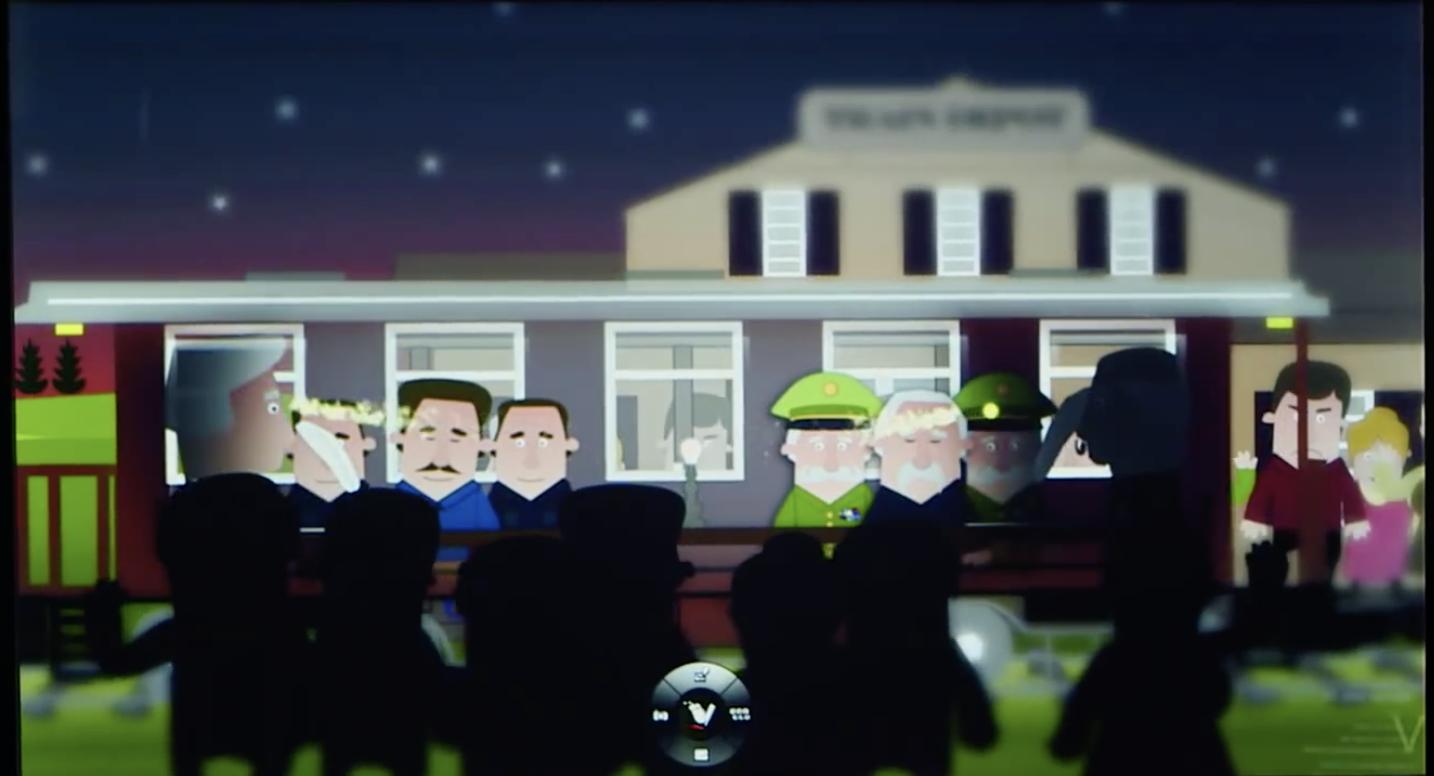I have currently been introduced to relativity of simultaneity with the following thought experiment:
Consider a train in which there are two presidents, one sitting at the front and the other at the back of the train. The two presidents must sign an agreement simultaneously for everyone to be happy. The way that they are going to carry this out is by having a laser shoot a light beam simultaneously towards each of the presidents and when the light beam gets to each president they will sign the agreement. Now consider this train moving from left to right and we will analyse this situation from the two inertial reference frames "train frame" and "platform frame". It then follows that from the "platform frame" the two presidents have not signed the agreement simultaneously while regarding this situation from the "train frame" the presidents did sign the agreement simultaneity. Until this point I understand everything
Q: Now consider that there is a bomb in the middle of the train and that bomb would blow up if the two presidents don't sign the agreement simultaneously and won't blow up if they do (this can be achieved via sensors added at the back and front of the train). Now this experiment is carried and from " platform frame" train blew up while in "train frame" train didn't blow up. Now this poses a paradox as the train can't blow up and not blow up in the same time even if its a matter of reference frames, since reality is connected. How can this paradox be resolved?
Moreover from this paradox I get the feeling that, even though observers in different inertial reference frames don't agree on simultaneity, they must agree on something, maybe cause of their action on nature around them? I don't know how to call this agreement. Because if they wouldn't agree on this (idk how to put it into words) then we would get paradoxes as the one above. Thank you for any help
ps: The though experiment with the presidents was presented by Brian Greene in his course on special relativity
